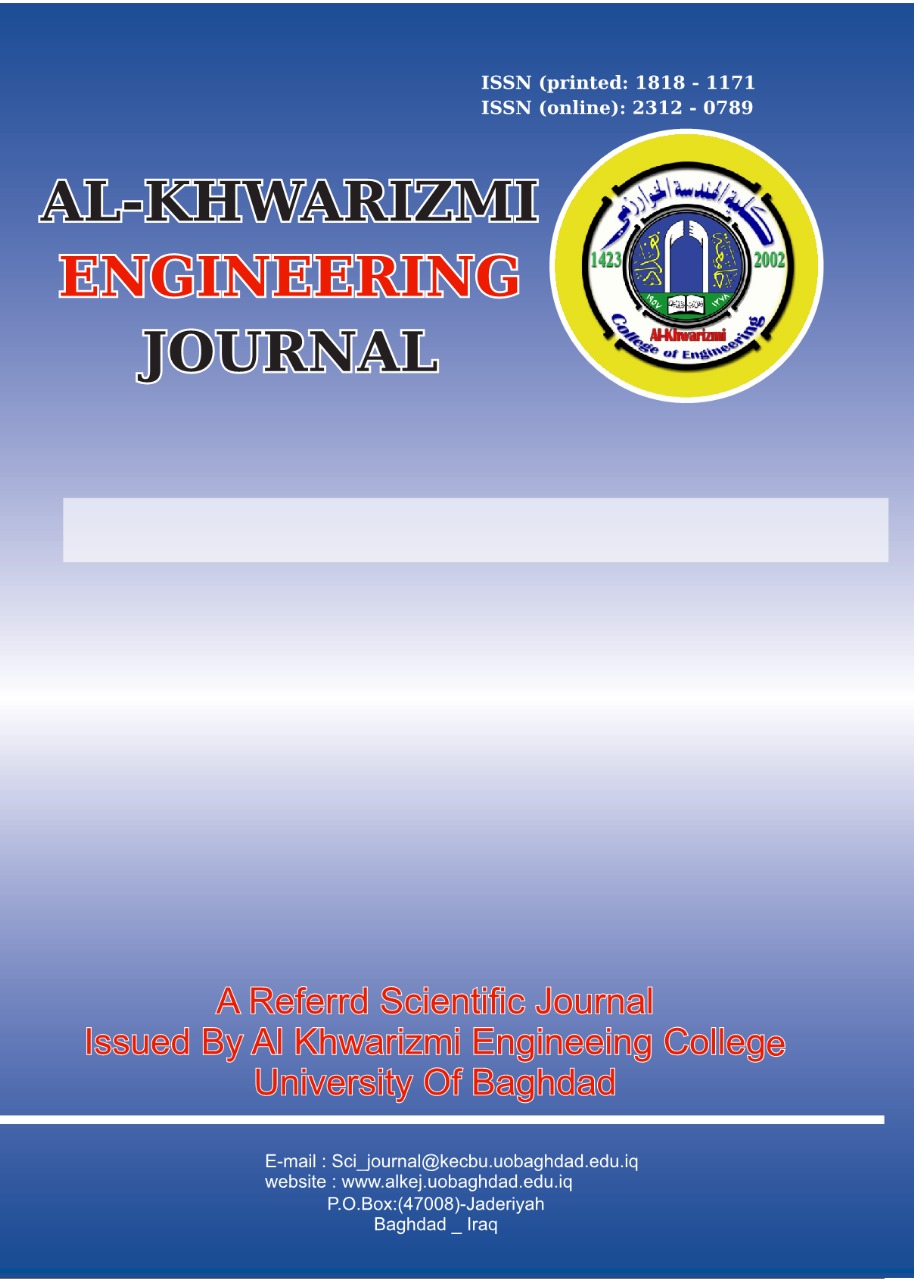Abstract
This study investigates the possibility of removing ciprofloxacin (CIP) using three types of adsorbent based on green-prepared iron nanoparticles (Fe.NPs), copper nanoparticles (Cu. NPS), and silver nanoparticles (Ag. NPS) from synthesized aqueous solution. They were characterized using different analysis methods. According to the characterization findings, each prepared NPs has the shape of a sphere and with ranges in sizes from of 85, 47, and 32 nanometers and a surface area of 2.1913, 1.6562, and 1.2387 m2/g for Fe.NPs, Cu.NPs and Ag.NPs, respectively. The effects of various parameters such as pH, initial CIP concentration, temperature, NPs dosage, and time on CIP removal were investigated through batch experiments. The results showed that 10 mg/L CIP was removed by 100%, 92% and 79% within 180 min using Fe.NPs, Cu.NPs, and Ag.NPs respectively. In addition to this, kinetic models of the adsorption and mechanism of CIP removal were studied. The cinematic analysis demonstrated that adsorption is a physics adsorption mechanism with an energy of 0.846 kJ.mol-1, 1.720 kJ.mol-1, and 3.872 kJ.mol-1, while the low activation energies of 17.660 kJ.mol-1, 13.221 kJ.mol-1, and 14.060 kJ.mol-1 for Fe.NPs, Cu.NPs, and Ag.NPs respectively. The kinetic removal process follows a pseudo-first-order model following a physical diffusion-controlled reaction. The data on adsorption was analyzed using the Langmuir, Freundlich, Temkin, and Dubinin models, as well as thermodynamic factors, indicating that the process is appropriate and endothermic sorption. The most practical adsorbent was Fe.NPs
Keywords
Adsorption
and Kinetics.
Copper
Green synthesis
Iron
nanoparticles
Removal Ciprofloxacin
Silver
Thermodynamics
Abstract
تبحث هذه الدراسة إمكانية إزالة السيبروفلوكساسين (CIP) من محلول مائي باستخدام ثلاثة أنواع من الجسيمات النانوية المحضرة بالطريقة الخضراء مثل جسيمات الحديد النانوية (Fe. NPs) وجسيمات النحاس النانوية (Cu. NPS) وجسيمات الفضة النانوية (Ag. NPS). تم توصيف الجسيمات النانوية المحضرة باستخدام طرق تحليل مختلفة ووفقًا لنتائج التوصيف فأن الجسيمات النانوية التي تم تحضيرها تمتلك شكل كرة وبأحجام تتراوح من 85 و47 و 32 نانومترًا ومساحة سطحها 2.1913 و 1.6562 و 1.2387 متر مربع / غرام لـكل من Fe. NPs ، Cu. NPs و Ag. NPs ، على التوالي. تمت دراسة تأثيرات العوامل المختلفة على إزالة السيبروفلوكساسين مثل الأس الهيدروجيني والتركيز الأولي للسيبروفلوكساسين ودرجة الحرارة وجرعة الجسيمات النانوية والوقت. أظهرت النتائج أنه تمت إزالة 10 ملغرام / لتر من السيبروفلوكساسين بنسبة 100٪ و92٪ و79٪ خلال 180 دقيقة باستخدام Fe. NPs و Cu. NPs و Ag. NPs على التوالي. بالإضافة إلى ذلك، تمت دراسة النماذج الحركية للامتصاص وآلية إزالة السيبروفلوكساسين وأظهر الدراسات أن الية الامتزاز كانت فيزيائية بطاقة 0.846 كيلو جول / مول و1.720 كيلو جول / مول و 3.872 كيلو جول / مول بينما طاقات التنشيط 17.660 كيلو جول / مول و 13.221 كيلو جول/مول و 14.060 كيلو جول/مول لكل من Fe. NPs و Cu. NPs و Ag. NPs على التوالي. تشير دراسة حركيات العملية الى ان عملية الامتزاز تخضع لنموذجا من الدرجة الأولى. تم تحليل البيانات الخاصة بالامتزاز باستخدام نماذج Langmuir وFreundlich وTemkin وDubinin. بالإضافة إلى دراسة الديناميكية الحرارية التي اشارت إلى أن عملية الامتزاز كانت ماصه للحرارة. أظهرت جسيمات الحديد النانوية كفاءه عالية مقارنة مع جسيمات النحاس والفضة النانوية
